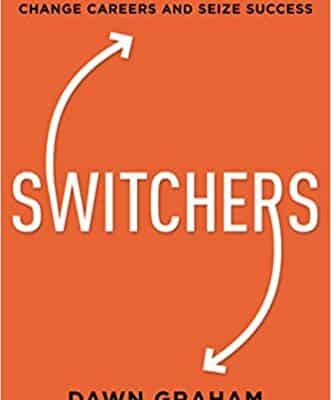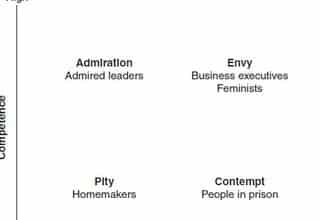Growing up, one of my favorite books was The Story of Ferdinand. Now being released as a movie, Ferdinand is the story of a bull who would rather smell flowers under a cork tree than take part in bullfights. He doesn’t succumb to the pressures and expectations of his bull-ish brethren nor does he acquiesce to the crowds encouraging him to take on the matador in the packed stadium.
Ferdinand’s story is a powerful lesson in remaining true to your core beliefs and resisting the urge to “fit in.” But does it translate into career success? A recent study published in the American Sociological Review explored this very idea—what is the relationship between success in a company and an employee’s inclination to change their behavior so as to be in step with company culture?
To determine the extent to which fitting in (versus standing out) is tied to future success, the researchers examined whether people used the same communication style as their colleagues in their emails. Utilizing more than 10 million internal email messages exchanged over five years by 600 employees, researchers created an algorithm that analyzed the natural language, focusing on the extent to which people expressed themselves using a linguistic style that matched the style of their colleagues. They then compared the data to who was promoted, quit, and terminated.
Most people recognize that, if they fail to differentiate themselves from their peers, they are very unlikely to get ahead. Yet fitting into a company creates a larger, motivating sense of identity for employees and enables them to collaborate with others in the organization.—Sameer Srivastava, co-author of the paper Fitting in or Standing Out?
The researchers theorized that employees can be characterized by their attachment to various network cliques, as well as their levels of cultural assimilation. This led to four archetypes: doubly embedded employees, disembedded employees, assimilated brokers, and integrated nonconformists.
Doubly embedded employees are those who are both culturally compliant and part of a larger, tight-knit network. They do not tend to stand out and are unlikely to move ahead. This individual “is a carbon copy of every other geeky member of his team,” says one of the researchers. “He isn’t perceived as unique or indispensable in any way.”
Disembedded employees do not fit into the culture and are not part of a tight-knit network. These individuals may come up with an innovative idea, but since they are not aligned with a network, their ideas are more likely to be dismissed or doubted. As a result, this archetype is three times more likely to be terminated versus other archetypes.
Those most likely to succeed are assimilated brokers (fit into the culture, but are not part of a tight-knit network) and their mirror image, integrated nonconformists (do not fit the culture, but are part of a tight-knit network). According to one of the researchers, “the assimilated broker is the ultimate networker… She is well-connected across the firm but not really a part of any one group.” On the other side, integrated nonconformists have the security and mutual commitment that comes from being part of a close knit team, but is not fully assimilated into the culture.
The clear takeaway is that both fitting in and standing out are important for career success—too much of either is a recipe for failure (or, at least, mediocrity). If you blend in both structurally and culturally, like the doubly embedded, you risk being perceived as plain and unremarkable. At the same time, if you don’t have an “in” group and lack the capacity for cultural conformity, you can wind up being perceived with suspicion and mistrust.
The truth is that we must find a balance between fitting in and standing out. “Either maintain your place as part of a tight-knit group but stand out by behaving a little weirdly, or be the smooth networker who knows what’s going on across the organization but also knows how to blend in culturally,” says the study.
As much as I’d like to preach that we all need to emulate Ferdinand the bull, he swayed towards the disembedded archetype. It works if you want to sit under a tree smelling flowers; not so much if you are working your way up the career ladder. So find your balance. Stand out while fitting in.








